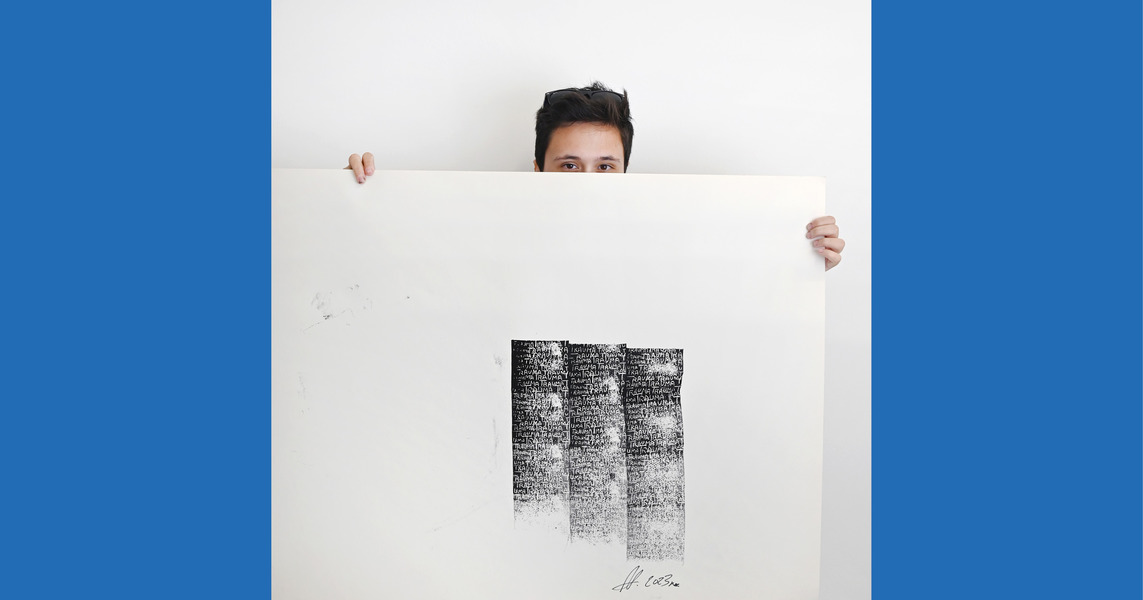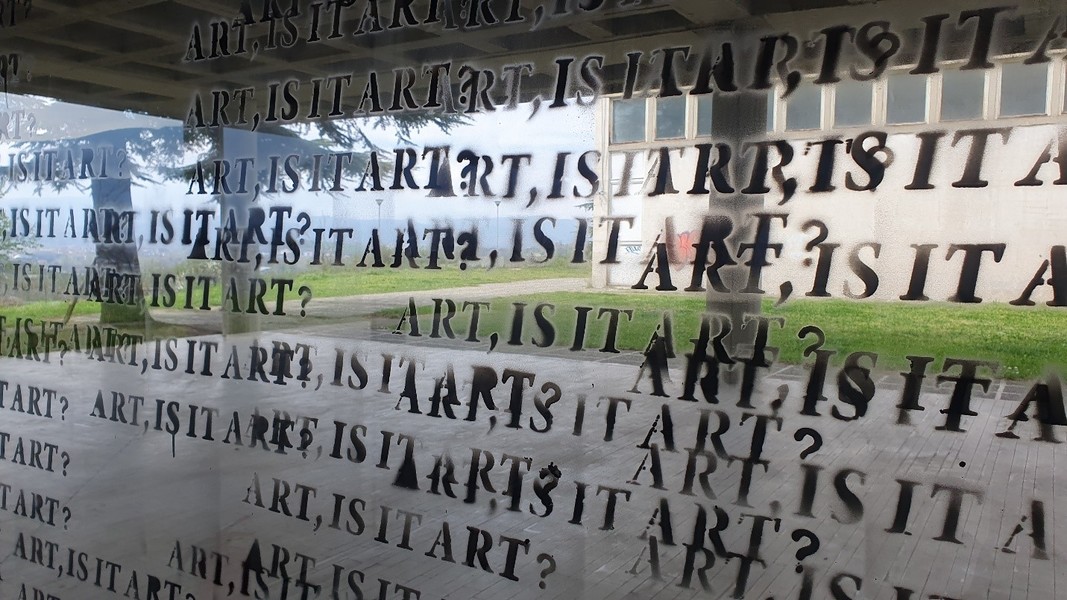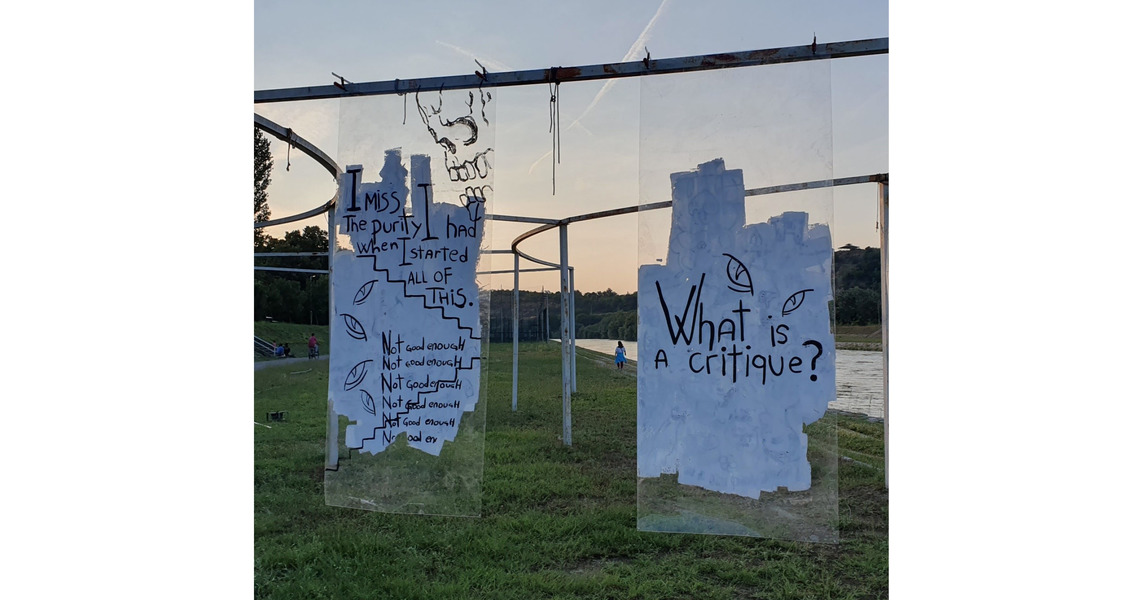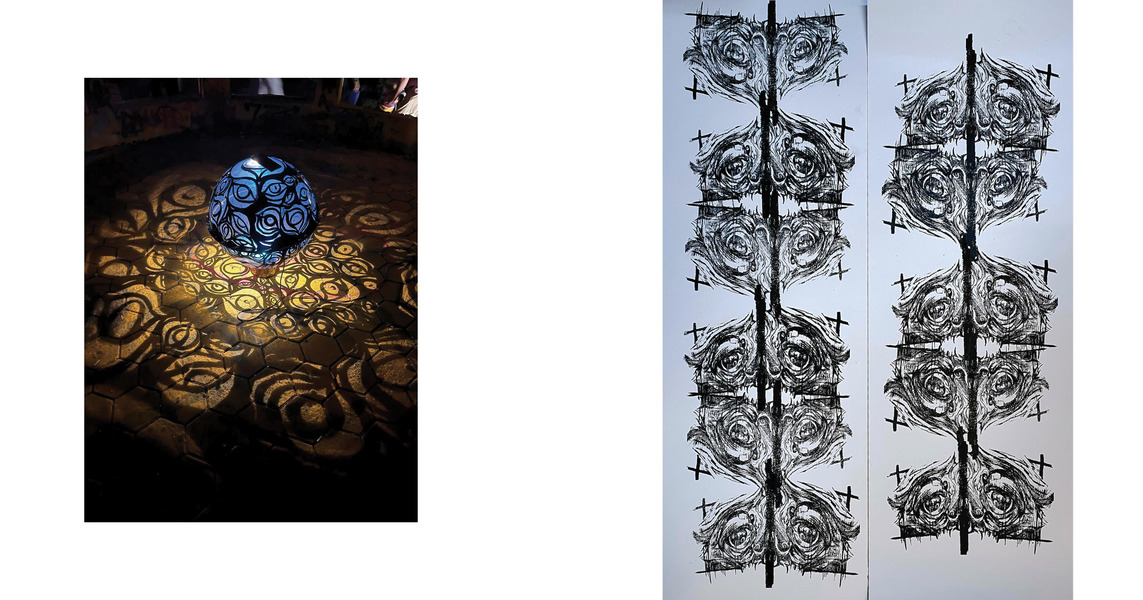Conceptual modernization of traditional printmaking
Published on 14.11.2023
PP Talk: Ana Trajkovska
The conversation was made in July 2023 as part of the PrivatePrint Meets program. Ana Trajkovska (b. 1995 in Skopje) shares her views on her emerging artistic practice, the challenge of traditional printmaking to show something that digital technologies cannot, and the possibilities for social criticism in contemporary works of art. She also talks about the opportunities that new technologies bring and the cooperation within the PrivatePrint VR Studio 2023 project.

You graduated from the printmaking department of the Faculty of Visual Arts in Skopje, and you are part of numerous solo and group exhibitions. We are interested in your perspective on your artistic practice and what topics interest you, not only as an artist but also as a person.
I sort of divide my work so far into two directions. I primarily deal with printmaking as a printing medium and want to make traditional printmaking more modern. And I bring that side closer to what I want to do thematically. During this period, I'm devoted to myself, what is around me, how I question the world around me, and my relationship with my colleagues in my field of activity. I am also working on other issues. But now, I am mostly interested in my feelings as a young author, how I convey myself, and how I see or present it in front of the scene. So my art is more directed towards criticism, criticism towards myself, towards young people... not only in a negative way. I want to get to some truth. The work should be true and real. And I think the more true it is, the more people will see themselves in it and understand art.

“Art, is it art?”, Biennale of Young Artists, Museum of Contemporary Art - Skopje, 2023
How do you do that? How do you develop that thought in the works to modernize traditional printmaking?
I simply use whatever materials I get from anyone that influences me and my work. I am inspired mainly by Andy Warhol, with that same cliché, that same information he repeats. Nothing has changed now; we still have the multiplication of information and ideas that we see around us all the time. I liked the idea that printmaking follows a multiplication principle, and it's up to the author what to do with it. And I love that it can be anything: 3D, relief, printed on nylon, canvas, on the wall. I like the idea that it can be transferred to many materials and surfaces and that they bring a new connotation.
I was also motivated by my professor Jakimovski, who used to tell us: "Don't limit yourself just because it's printmaking; don't limit the idea you want to say." Because most people stick to the technique, I am simply free from any obstacles if I take that away. I really like experimenting with printmaking. Because as a medium, it has already changed with the use of graphic design. I wonder, what is the validity of traditional printmaking when I can do the same thing digitally, just like that? That's why I like the direction to see how we can conceptualize printmaking for it to be something digital cannot.
Multiplication as the basis of printmaking is very interesting. How, in general, do you build the visual language in your works?
I treat each print as an experiment. I don't know if it will turn out to be work or if it will be garbage. How far can I print it, how much color to use, how to match the paints, and whether it works visually or aesthetically? These questions were vital for my first phase, when I was inspired by Japanese art in my first works, and I still work in that format. After I finished that phase, I got fed up with the abstract. And I moved on to a more critical approach in the works. Now, I build the visual more through the use of text. Because I wanted to reduce the works to come directly to the point. Still, it is a print; there is the imprint, the multiplication; now, my works must show the point more directly.

“The pure, the rotten and everything in the middle”, “Spatial re-adaptations 2.0” - outdoor group exhibition, 2023
What can art achieve from that aspect in society?
Art has always influenced the main human characteristics, culture, and thought. It always conveys a message. Now, art is more critical. I also notice that globally, artists research, document, and represent the problem, global warming, social problems, etc. And not only do they represent it, but they also offer a solution to that problem.
Do you have an idea for a work you cannot realize because of the conditions but have a great desire to do it?
Until now, I have carried out all the ideas I have had. There have always been technical problems, but I have found a way to solve that problem more cheaply. The print I exhibited in Kumanovo was the largest I've done, and it was printed on nylon because it was the cheapest way. But it also came out the purest; it suited that space and that idea the most. In my opinion, there is always a way; it will not be like you imagined it at the beginning, it will not be perfect, but there is always a way to realize a work. My tendency in my work is to go for larger prints.
Why large prints?
I like the challenge because there are no big prints. Because a sizeable traditional print is a meter by seventy. Okay, but prints can be so much more than that. All media are evolving. I say to myself, then, what is the evolution of printmaking? I want to take printmaking to the next level.
I will try to stretch that medium as much as possible, using the primary material – the printing ink as the basis for creating the print and the multiplication as the basis of the printmaking process.

“Vicarious”, light installation, Bela Nok, Skopje, 2022 and “Everything bounces back in the end”, silkscreen on paper, 2023
You collaborate with us in the VR Studio program and are part of a group virtual exhibition. How does the virtual space complement your work with traditional printmaking?
The virtual exhibition is the future. I see that space as the future. It is accessible to everyone. We can visit it anytime, anywhere, even on the phone. We open the link, and we are at the exhibition. I like that in the virtual space everything can be used. When we have that virtual space and can do whatever we want with it, why not use all the space.
I also find similarities between printmaking and virtual space. For example, in this project with you, I use multiplication. My work there also builds on the repetitiveness we have around us every day; that need is repeated.
The photographs of the works are courtesy of the artist.
--
PrivatePrintMeets is a series of meetings with emerging artists from N. Macedonia and is part of PrivatePrint's project activities funded by the Prince Claus Network Partnership programme.
VR Studio 2023 is co-financed by the Ministry of Culture of the Republic of North Macedonia and made possible through our activities in the PrivatePrint Meets series funded by the Prince Claus Network Partnership Programme.